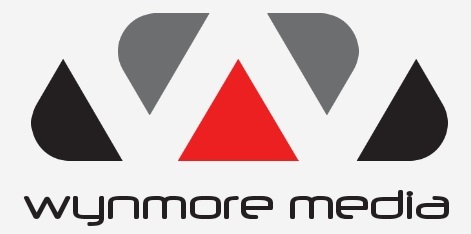All humans instinctively by human nature move away from pain. When someone is punching you repeatedly, your instinct is to try and run away from the person causing you this pain. What type of pain is your customer experiencing, and trying to run away from?
Moving away from pain and moving towards pleasure are two different paths a customer can take to reach the same goal. One path is based on needs, and the other is based on wants, or desire. That is why your first question that you should be asking yourself as a business owner is:
“which of these three desires is my future ideal customer trying to receive when they buy my product or service?”
Is it health, wealth, or relationships? Every product or service for any business falls into one of these three categories. Some businesses may fall into multiple categories, and that is fine. However, you will need a separate funnel, separate ad, and a separate message for each desire because you are targeting two different markets.
Once you have determines which category your business falls into, on two sheets of paper, write down as many statements as you can of what your ideal customer could be saying to themselves or thinking. On one sheet it is focused on their pain. On another sheet of paper, it is focused on moving towards pleasure, or desire.
For example, if you are a weight loss business, you are probably falling into two categories. They would be health and relationships. So now, a potential customer for weight loss could be saying to themselves that they are overweight and don’t feel comfortable in their clothes. They are saying to themselves that they need to lose weight. This is a need. This need can fall into either category, health and relationships. It is a health concern to help the customer come up with a plan to lose weight and stick to that plan until they reach their goal. On the relationship side, they could be saying that they want to either be rocking a bikini again or want six pack abs. That is an example of a want, or desire.
Once you determine what category your business falls into and what your customers are thinking, you need to be finding out where they are congregating so you can best target them. You do that by making a list of people in your industry. They could be competitors, influences, bloggers, etc that have amassed a large following. This large following is where your ideal customers are hiding. The next step is to find the groups, pages, and individuals on your social media platforms to target in your advertising. For example, if your ideal customers are following Tony Robbins, you would setup an ad to target people who have an interest in Tony Robbins. You ad will then show up to these people.
Before we delve deeper into this, let’s cover the two types of traffic a business has to work with. They include search-based traffic and interruption traffic.
- Search-based traffic is when a potential customer as a need and they go to Google in search for a solution. These are your hot buyers who are ready to buy, but they are also trying to compare options with your competitors.
- Interruption traffic. These are a group of people who are targeted based on certain interests and are interrupted with ads. This is warm traffic based on people’s interests. You sell to this group based on perceived value and emotion. Since these people are not actively searching for what you have to offer, you will need to rely on a strong hook to grab their attention and stop scrolling, and a strong emotional story and offer with a sense of urgency on your landing page to close the sale.
Now, let’s talk about what interruption advertising is.
In 1927, the television was invented. Just 15 years later on July 1, 1942 during a Brooklyn Dodgers-Philadelphia Phillies game, the first ever TV commercial aired. It was only 9 seconds in length, cost only $9 (in 1942 currency), and was promoting a clock. This event ushered in the era of the interruption advertising model. The interruption advertising model is a process to get a captive audience, entertain and educate them, and then when you have their full attention, you interrupt with your message.
There are three types of interruption advertising: cold calling, door to door canvassing, and social media advertising.
- Cold calling is an example of interruption advertising. Your audience is somewhere enjoying their day. They could be sitting down at a coffee shop having a cup of coffee, or a home watching TV. They could be doing work on their business, or some other type of activity that has them captively engaged at the moment. Then all of sudden the phone rings, and it is a telemarketer on the other end interrupting their day with their message.
- Door to door canvassing is another example of interruption advertising. It is also the most dangerous types of advertising since you are going door to door knocking on people’s doors interrupting their day. You have no idea who might open that door. They may be a sexual predator, someone with a gun who is pissed off that you interrupted what they were doing, or a nice old lady who is just looking for some company. Regardless, you are interrupting an activity that this person was doing to come to the door and answer it.
- Then in 2007, Facebook came up with Facebook ads, a socially adept version of interruption advertising. You could be that woman who was simply scrolling on her Facebook news feed to see what was happening in the world with family and friends. All of sudden an image of another women who peed her pants pops up. The hook caused of a woman in workout shorts that peed her pants grabbed her attention. It peaked her interest enough causing her to click the ad which brought her to a landing page where another woman was telling the story of the time that she peed her pants during a workout video, and a doctor that she partnered with to sell an eBook helping other women with the same condition. This woman could relate because the very same thing happened to her when she was jumping on a trampoline with her kids. She peed her pants and had to come up with an excuse to stop and get off the trampoline. This socially modified version of interruption advertising made this woman, who was enjoying her news feed, stop scrolling long enough to grab her attention, tell a story, and made an offer she could not refuse.
Interruption advertising has come a long way from that 9 second commercial back in 1942. It has adapted and evolved over time into new forms for new mediums. The goal however is still the same, and that is to covert paid and organic traffic into traffic that you own (i.e. your email list and customer list). This list is the most valuable asset for any business, and it is one of the reasons why businesses get acquired. The acquiring company wants that list! So, work on building that email list of customers!
In conclusion, I covered a lot in this article. I hope that you learned the importance of finding out what category your business falls into, who your ideal customer is, and where they are hiding. I also covered a brief history of interruption advertising that is still around to this day, and you may not even realize that you are affected by it.
Time To Meet With Nick
Nick Roy has been involved in marketing and website design since 1999. He has been a business owner since 2008 where he grew his first agency to 7 figures in five years before a bad acquisition brought that to a halt. That combination of success and failure provides Nick with a unique perspective to share with clients on what it takes to succeed as a small business owner. While he currently holds an MBA from Hawaii Pacific University, he is primarily self-taught when it comes to website design and online marketing. He is also an instructor of social media marketing for Wynmore Academy. Click here to set up a time to talk with Nick about your business goals.

